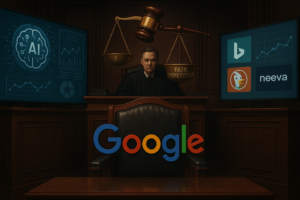The AI Revolution in Insurance: Efficiency or Job Displacement?
The Current State of AI in Insurance
AI’s integration into the insurance industry is not a futuristic concept but a present-day reality. According to a report by McKinsey & Company, AI has the potential to automate up to 25% of the insurance industry’s processes by 2025. The use of AI ranges from customer service chatbots to complex risk assessment algorithms, transforming how companies operate and interact with customers.
Enhancing Efficiency Through AI
One of the most significant impacts of AI in the insurance sector is its ability to streamline processes. Stephen Billyard, CEO of Billyard Insurance Group (BIG), highlighted the efficiency gains AI has brought to his firm during the Future of Insurance 2024 event in Toronto. By implementing generative AI (GenAI) and retrieval-augmented generation (RAG) models, BIG has reduced the time taken for underwriting processes from 20 minutes to a mere 20 seconds. This remarkable improvement underscores AI’s potential to handle complex tasks that traditionally required manual intervention.
Practical Applications and Innovations
At the forefront of AI application in insurance is the development of platforms that manage the entire sales and underwriting process. These systems are designed to guide brokers from initial client information gathering to policy binding, ensuring accuracy and compliance at every step. For instance, BIG’s platform uses AI to interpret supporting documents, validate regulatory requirements, and apply discounts, thereby minimizing errors and enhancing service delivery.
Moreover, AI enables real-time monitoring and management of broker activities. This capability allows firms to identify patterns such as excessive use of certain discounts or misrepresentation of usage, which can lead to premium leakage. By providing insights into broker performance, AI helps companies maintain control over their data and improve overall business outcomes.
The Job Displacement Debate
Despite the evident benefits of AI, there is an ongoing debate about its impact on employment within the insurance industry. While some industry leaders argue that AI will complement human roles by handling repetitive tasks, others, like Billyard, acknowledge the potential for job displacement. AI’s ability to automate tasks traditionally performed by underwriters and claims adjusters poses a threat to these roles, necessitating a strategic approach to workforce management.
Adapting to the AI-Driven Future
The insurance industry must adapt to the changing landscape by embracing AI while addressing the workforce implications. Training programs and reskilling initiatives are essential to equip employees with the skills needed to work alongside AI technologies. Companies must also explore opportunities for creating new roles that focus on managing AI systems and interpreting data insights.
A report by PwC suggests that AI could create more jobs than it displaces by generating new opportunities in areas such as data analysis, cybersecurity, and digital transformation. By fostering a culture of continuous learning and innovation, the insurance industry can harness AI’s potential while safeguarding employment.
AI and Customer Experience
Beyond operational efficiency, AI is revolutionizing customer interactions in the insurance industry. Personalized recommendations, instant claims processing, and round-the-clock customer support are just a few examples of how AI enhances the customer experience. A survey by Accenture found that 63% of insurance customers are willing to share more personal data if it leads to better service, indicating a growing acceptance of AI-driven solutions.
Challenges and Ethical Considerations
As AI becomes more prevalent in insurance, ethical considerations and regulatory challenges arise. The use of AI in risk assessment and pricing can lead to concerns about fairness and transparency. Ensuring that AI algorithms are unbiased and adhere to ethical standards is crucial to maintaining customer trust and avoiding regulatory pitfalls.
Furthermore, data privacy remains a significant concern. Insurance companies must implement robust data protection measures to safeguard sensitive customer information and comply with evolving regulations.
Conclusion: Navigating the AI Transformation
The integration of AI into the insurance industry presents both opportunities and challenges. While AI offers unparalleled efficiency and improved customer experiences, it also necessitates careful consideration of job displacement and ethical issues. By adopting a strategic approach that prioritizes employee development and ethical AI practices, the insurance industry can successfully navigate this transformative journey.
As AI continues to evolve, its role in shaping the future of insurance will undoubtedly expand. Embracing this change with foresight and adaptability will be key to unlocking AI’s full potential while ensuring a sustainable and inclusive industry for all stakeholders.


